Abstract
The goal of this project was to specify and develop an algorithm that will check for drug and problem list mismatches in an electronic medical record (EMR). The algorithm is based on the premise that a patient's problem list and medication list should agree, and a mismatch may indicate medication error. Successful development of this algorithm could mean detection of some errors, such as medication orders entered into a wrong patient record, or drug therapy omissions, that are not otherwise detected via automated means. Additionally, mismatches may identify opportunities to improve problem list integrity. To assess the concept's feasibility, this study compared medications listed in a pharmacy information system with findings in an online nursing adult admission assessment, serving as a proxy for the problem list. Where drug and problem list mismatches were discovered, examination of the patient record confirmed the mismatch, and identified any potential causes. Evaluation of the algorithm in diabetes treatment indicates that it successfully detects both potential medication error and opportunities to improve problem list completeness. This algorithm, once fully developed and deployed, could prove a valuable way to improve the patient problem list, and could decrease the risk of medication error.
Full text
PDF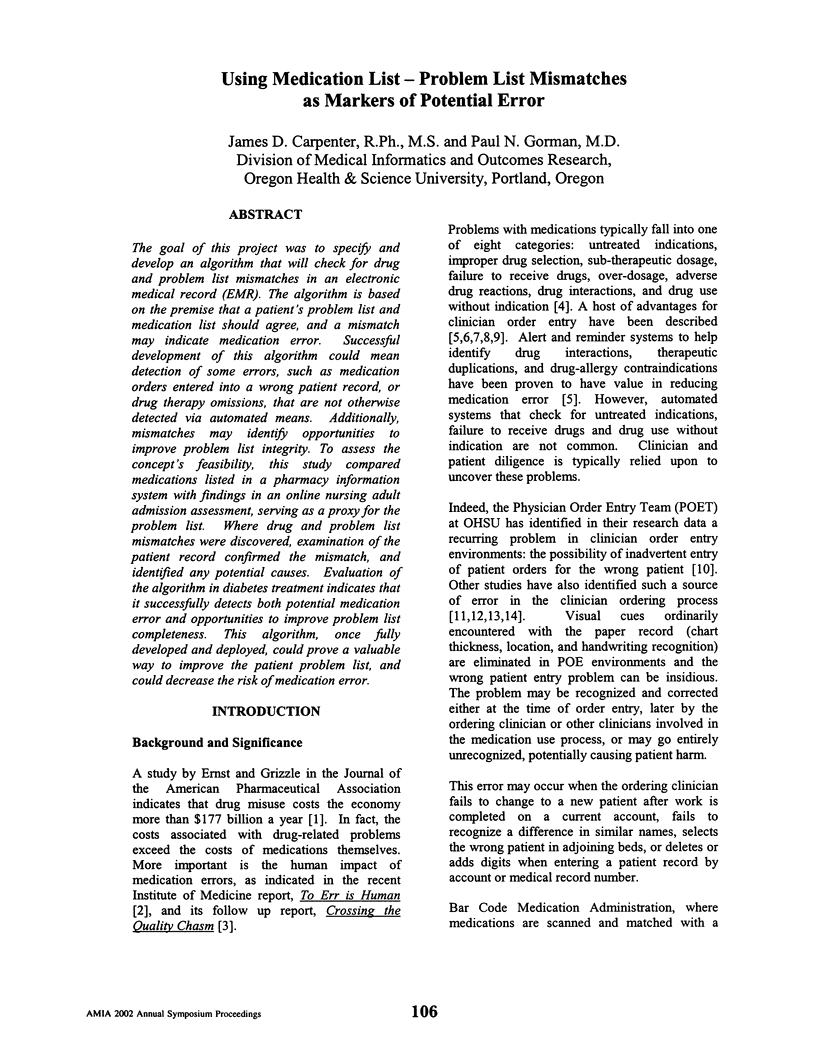
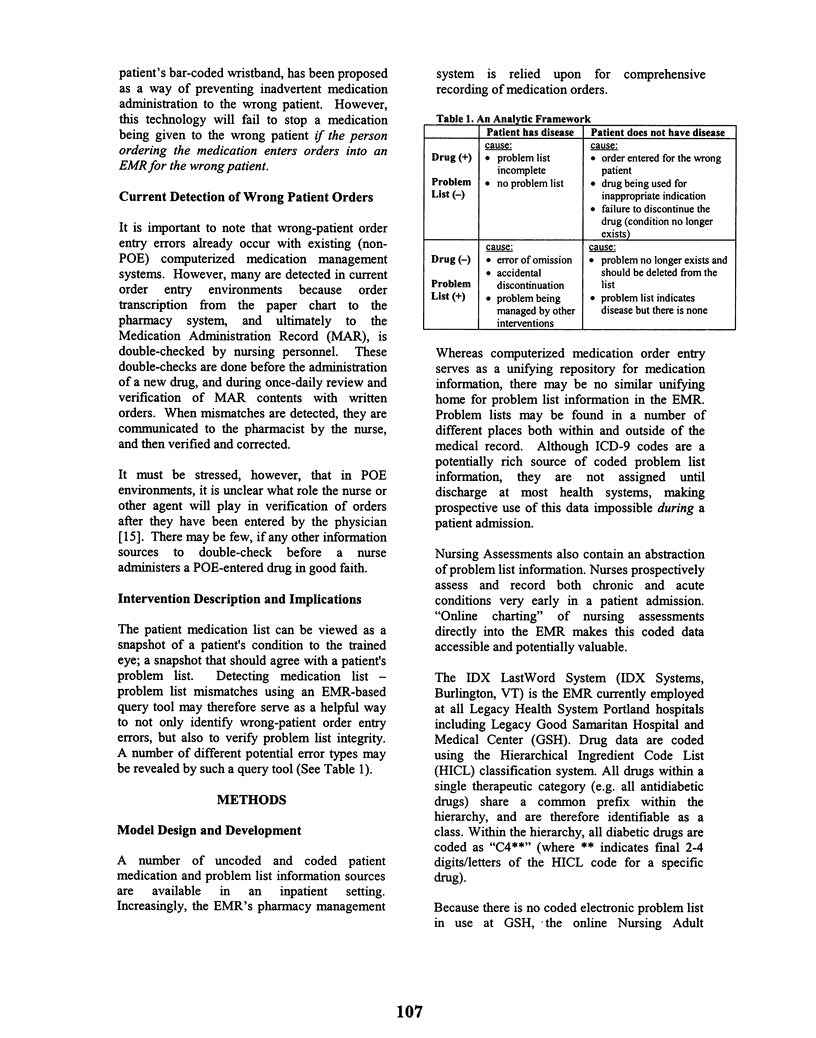
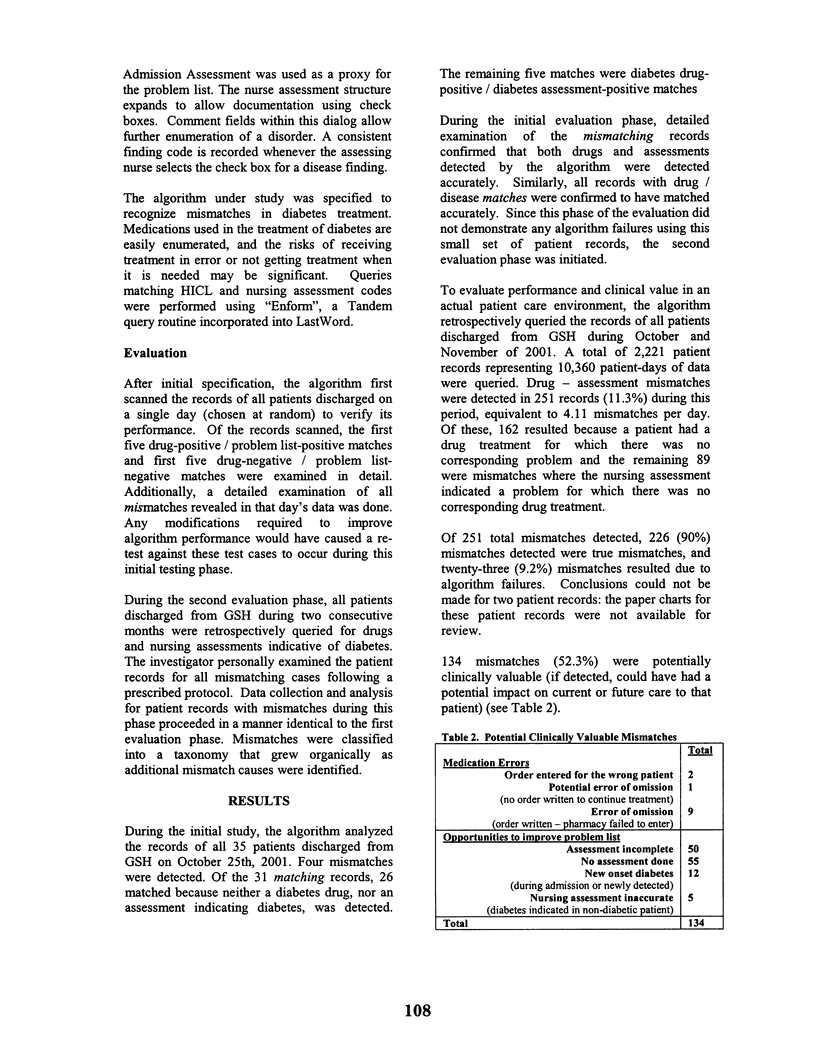
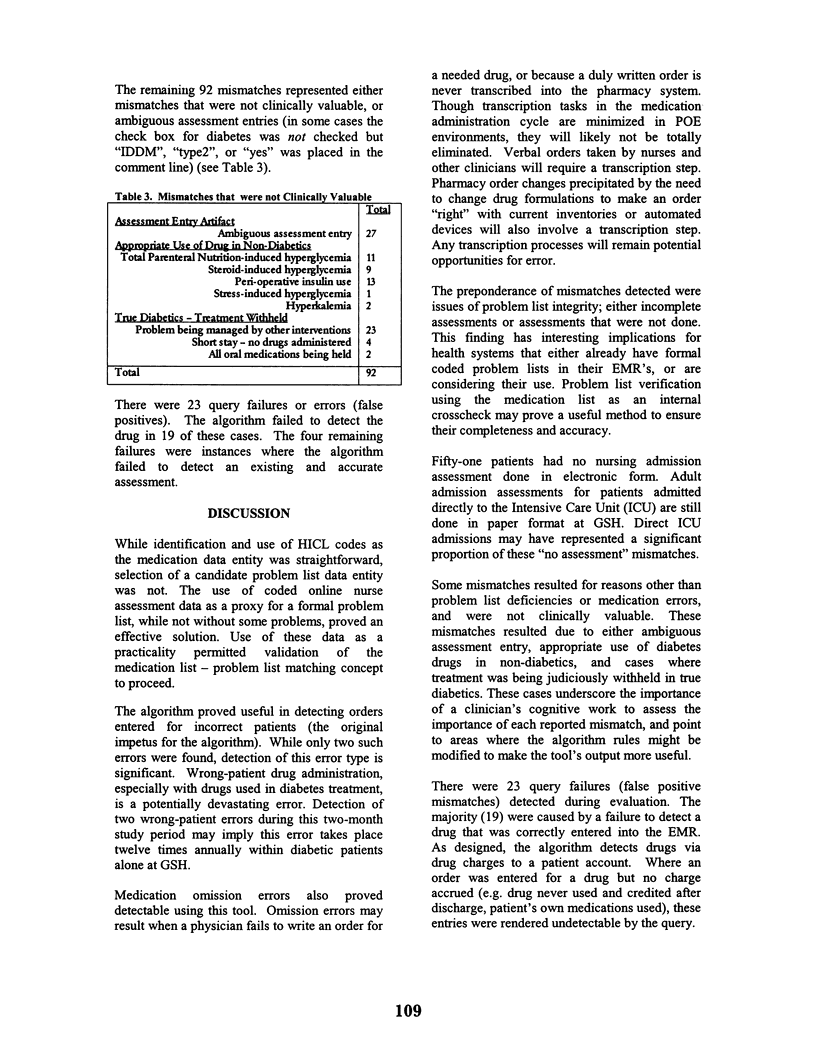
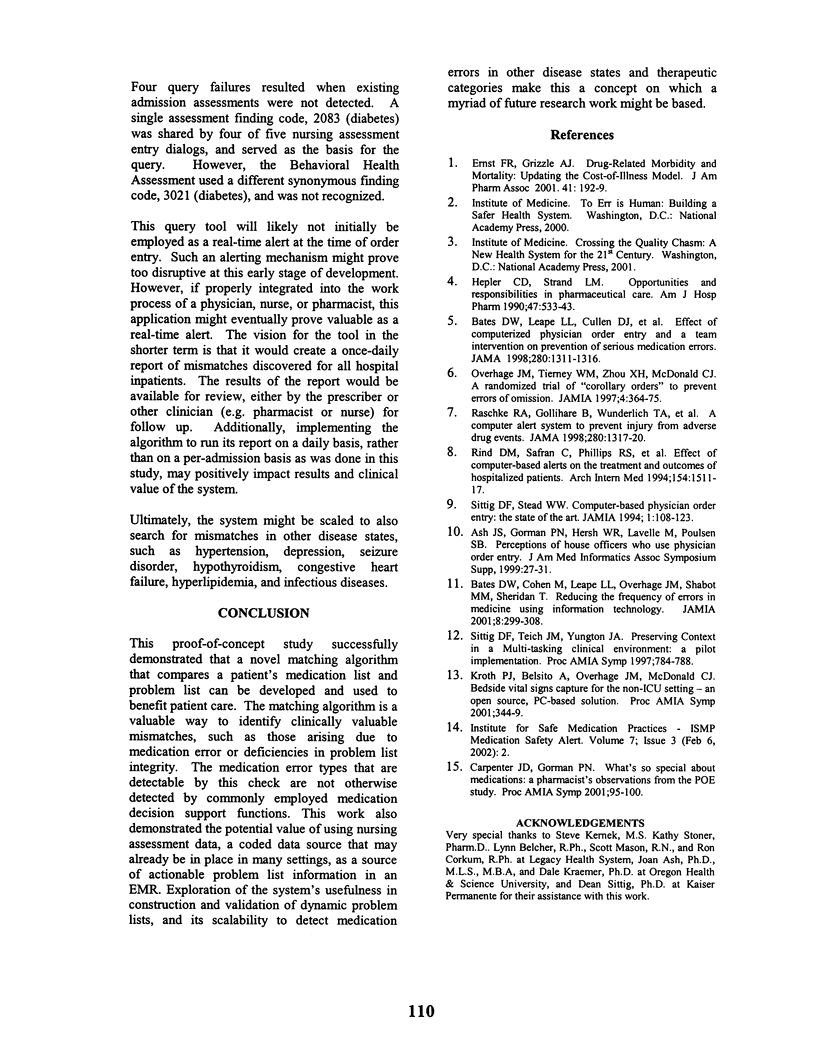
Selected References
These references are in PubMed. This may not be the complete list of references from this article.
- Bates D. W., Cohen M., Leape L. L., Overhage J. M., Shabot M. M., Sheridan T. Reducing the frequency of errors in medicine using information technology. J Am Med Inform Assoc. 2001 Jul-Aug;8(4):299–308. doi: 10.1136/jamia.2001.0080299. [DOI] [PMC free article] [PubMed] [Google Scholar]
- Bates D. W., Leape L. L., Cullen D. J., Laird N., Petersen L. A., Teich J. M., Burdick E., Hickey M., Kleefield S., Shea B. Effect of computerized physician order entry and a team intervention on prevention of serious medication errors. JAMA. 1998 Oct 21;280(15):1311–1316. doi: 10.1001/jama.280.15.1311. [DOI] [PubMed] [Google Scholar]
- Ernst F. R., Grizzle A. J. Drug-related morbidity and mortality: updating the cost-of-illness model. J Am Pharm Assoc (Wash) 2001 Mar-Apr;41(2):192–199. doi: 10.1016/s1086-5802(16)31229-3. [DOI] [PubMed] [Google Scholar]
- Hepler C. D., Strand L. M. Opportunities and responsibilities in pharmaceutical care. Am J Hosp Pharm. 1990 Mar;47(3):533–543. [PubMed] [Google Scholar]
- Kroth P. J., Belsito A., Overhage J. M., McDonald C. J. Bedside vital signs capture for the non-ICU setting--an open source, PC-based solution. Proc AMIA Symp. 2001:344–348. [PMC free article] [PubMed] [Google Scholar]
- Overhage J. M., Tierney W. M., Zhou X. H., McDonald C. J. A randomized trial of "corollary orders" to prevent errors of omission. J Am Med Inform Assoc. 1997 Sep-Oct;4(5):364–375. doi: 10.1136/jamia.1997.0040364. [DOI] [PMC free article] [PubMed] [Google Scholar]
- Raschke R. A., Gollihare B., Wunderlich T. A., Guidry J. R., Leibowitz A. I., Peirce J. C., Lemelson L., Heisler M. A., Susong C. A computer alert system to prevent injury from adverse drug events: development and evaluation in a community teaching hospital. JAMA. 1998 Oct 21;280(15):1317–1320. doi: 10.1001/jama.280.15.1317. [DOI] [PubMed] [Google Scholar]
- Sittig D. F., Stead W. W. Computer-based physician order entry: the state of the art. J Am Med Inform Assoc. 1994 Mar-Apr;1(2):108–123. doi: 10.1136/jamia.1994.95236142. [DOI] [PMC free article] [PubMed] [Google Scholar]
- Sittig D. F., Teich J. M., Yungton J. A., Chueh H. C. Preserving context in a multi-tasking clinical environment: a pilot implementation. Proc AMIA Annu Fall Symp. 1997:784–788. [PMC free article] [PubMed] [Google Scholar]


